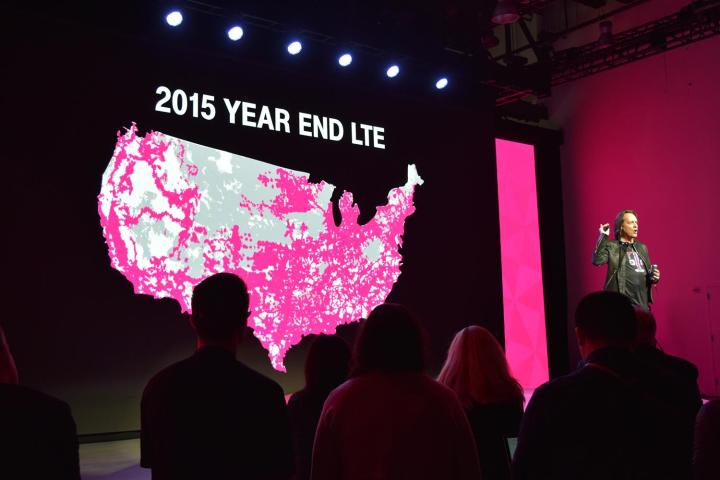
A quick look at the map reveals something that most people already know: T-Mobile is strongest in cities and the somewhat urban areas surrounding them. The Uncarrier is weakest in middle America and in rural areas across the States. There are even a handful of states that only get so-called “partner” coverage. Those parts of the map are a sad, dismal gray color.
Although the map gives you a general overview of T-Mobile’s coverage, it also lets you search by a specific address, city, state, and zipcode. The map will zoom right in on your residence and let you know if the Uncarrier’s got you covered, and what kind of signal you can expect, whether it be 4G LTE, 4G, 3G, 2G, partner, or no coverage.
Of course, much of the data comes from T-Mobile’s 200 million customer data usage points across the country, but T-Mobile also partnered with Inrix and other third-party companies to supply the most accurate coverage data possible to its customers. The idea behind T-Mobile’s living coverage map is that customers shouldn’t have to gamble on a network without knowing what kind of service they can expect in their specific location.
The map will update twice a month so the data should always be up to date, unlike say, that ancient map of T-Mobile coverage Verizon was still using in its commercials until T-Mobile CEO John Legere called Big Red out on that bit of false advertising. You can check out the map on T-Mobile’s website.
Check your coverage at: T-Mobile
Editors' Recommendations
- Have T-Mobile? Your 5G service is about to get much faster
- T-Mobile just set another 5G speed record
- T-Mobile still has the fastest 5G, but its rivals are catching up
- The 5G speed race is over and T-Mobile has won
- T-Mobile’s newest plans are exciting for new (and old) customers


